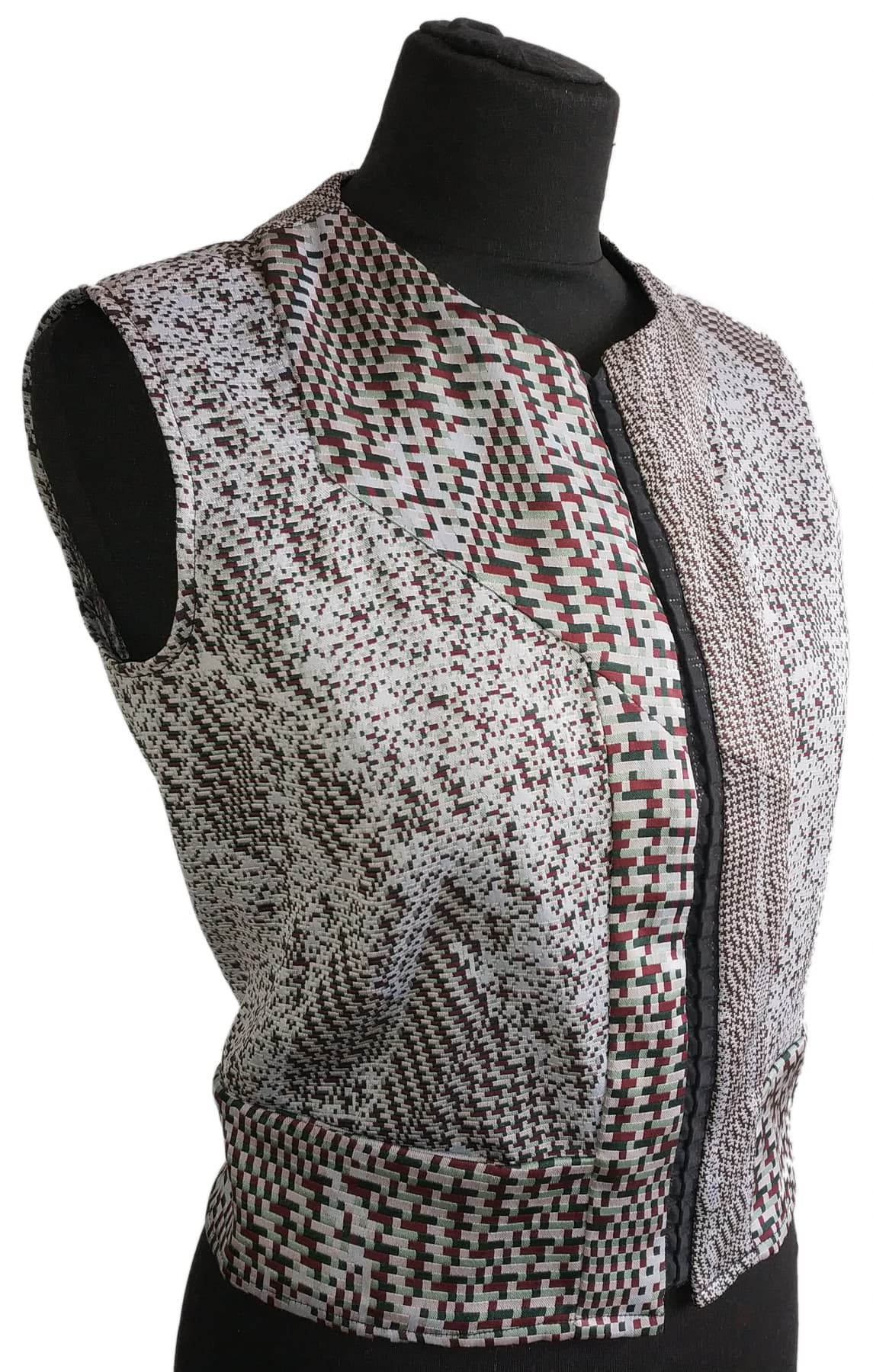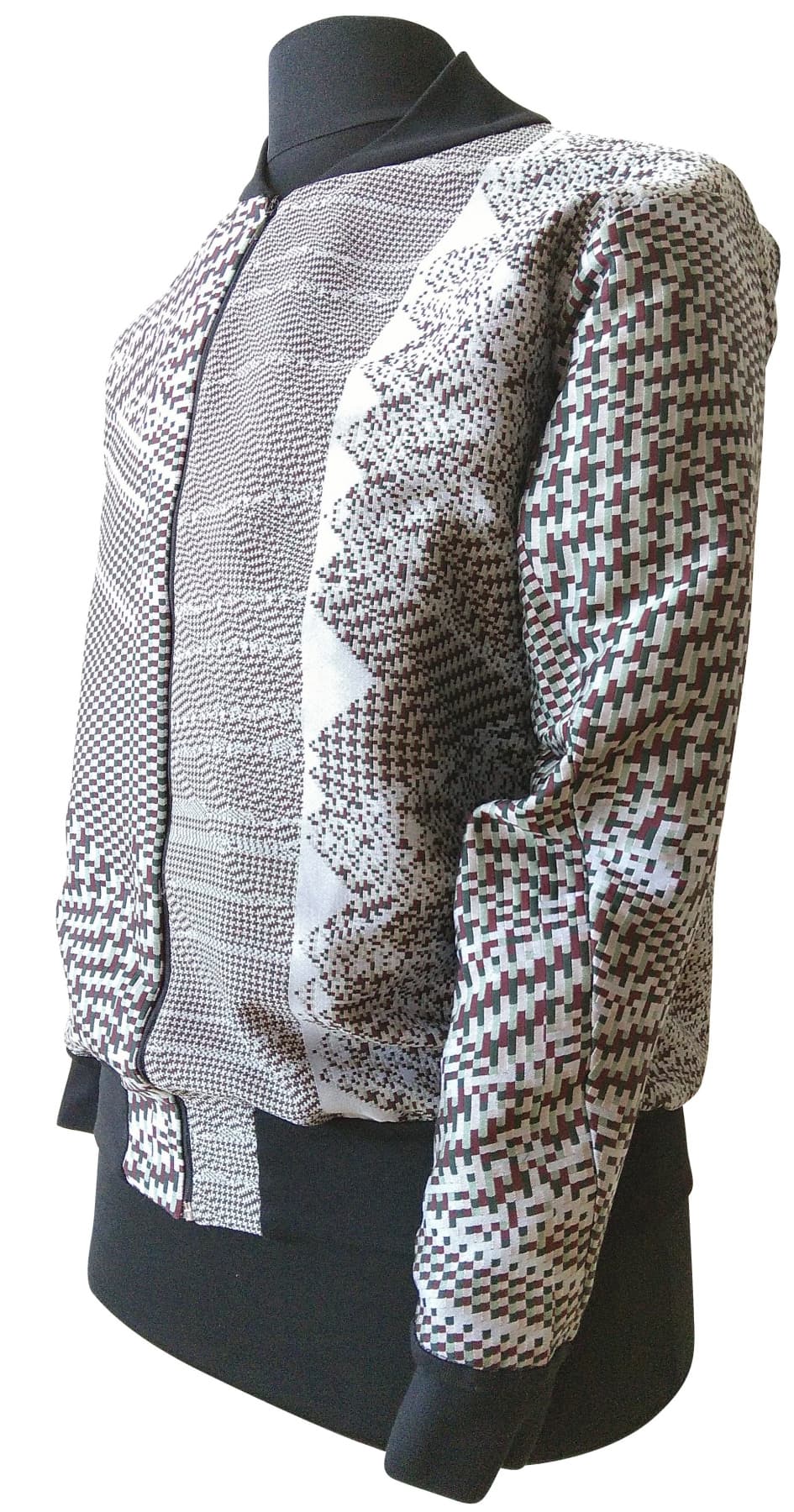Marina Toeters and Loe Feijs
Artists
Loe Feijs
Emeritus Professor
LAURENTIUS LAB. and TU/e and Fashion Tech Farm
Sittard and Eindhoven, The Netherlands
Statement
Complex behavior arises from a multitude of interacting agents. Even if the rules of the agents seem of simple design, the behavior of a crowd of agents can be overwhelmingly complex. The three cornerstones of complexity theory are emergence, transition and resilience. The fashion system is an example of a complex adaptive system. We focus on a particular type of fashion pattern known as Pied-de-poule (houndstooth) and use it as an inspiration to design cellular automatons that generate new patterns (motifs). The patterns are woven and the fabrics are used to design and construct a mini-collection of contemporary fashion items.
Artworks

Cellular automaton based sleeveless top
50 x 36 x 30 cm
Ultra detailed woven polyester textile
2017

Cellular automaton based bomber jacket
70 x 45 x 30 cm
Ultra detailed woven polyester textile
2017